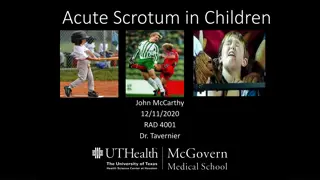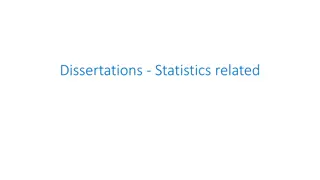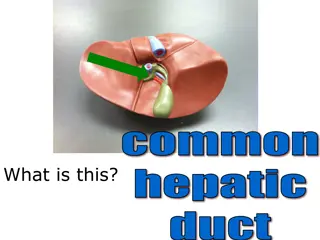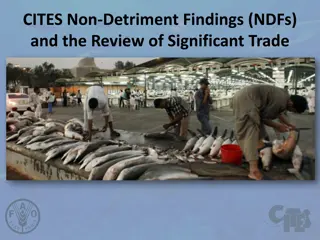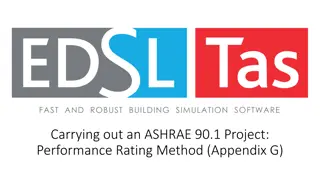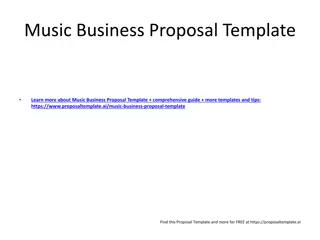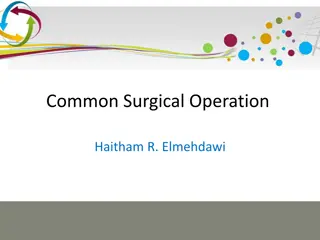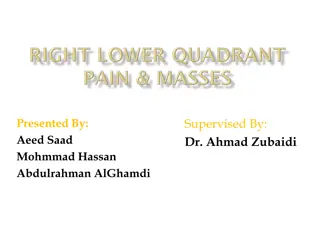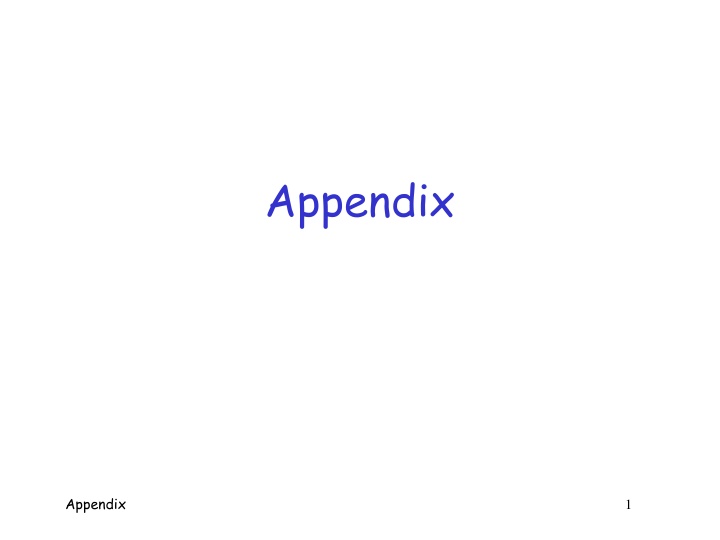
Networking Basics and Protocols: A Comprehensive Overview
Explore the fundamentals of networking, including protocol stacks, network core, edge, and packet-switched networks. Learn about different types of deaths in the network world and the significance of modular arithmetic and linear algebra in math basics. Discover the components of a network, from computers to servers, routers, and wireless devices. Delve into the world of network protocols and the communication rules specified in RFCs. Enhance your knowledge of networking with illustrations and insightful explanations in this informative appendix collection.
Download Presentation

Please find below an Image/Link to download the presentation.
The content on the website is provided AS IS for your information and personal use only. It may not be sold, licensed, or shared on other websites without obtaining consent from the author. If you encounter any issues during the download, it is possible that the publisher has removed the file from their server.
You are allowed to download the files provided on this website for personal or commercial use, subject to the condition that they are used lawfully. All files are the property of their respective owners.
The content on the website is provided AS IS for your information and personal use only. It may not be sold, licensed, or shared on other websites without obtaining consent from the author.
E N D
Presentation Transcript
Appendix Appendix 1
Appendix Networking basics o Protocol stack, layers, etc. Math basics o Modular arithmetic o Permutations o Probability o Linear algebra Appendix 2
Networking Basics There are three kinds of death in this world. There's heart death, there's brain death, and there's being off the network. Guy Almes Appendix 3
Network Includes o Computers o Servers o Routers o Wireless devices o Etc. Purpose is to transmit data Appendix 4
Network Edge Network edge includes Hosts o Computers o Laptops o Servers o Cell phones o Etc., etc. Appendix 5
Network Core Network core consists of o Interconnected mesh of routers Purpose is to move data from host to host Appendix 6
Packet Switched Network Telephone network is/was circuit switched o For each call, a dedicated circuit established o Dedicated bandwidth Modern data networks are packet switched o Data is chopped up into discrete packets o Packets are transmitted independently o No dedicated circuit is established +More efficient bandwidth usage - But more complex than circuit switched Appendix 7
Network Protocols Study of networking focused on protocols Networking protocols precisely specify communication rules Details are given in RFCs o RFC is essentially an Internet standard Stateless protocols do not remember Stateful protocols do remember Many security problems related to state o E.g., DoS is a problem with stateful protocols Appendix 8
Protocol Stack Application layer protocols o HTTP, FTP, SMTP, etc. Transport layer protocols o TCP, UDP Network layer protocols o IP, routing protocols Link layer protocols o Ethernet, PPP Physical layer user space application transport OS network link NIC card physical Appendix 9
Layering in Action router data data application application transport transport network network network link link link host physical physical physical host At source, data goes down the protocol stack Each router processes packet up to network layer o That s where routing info lives Router then passes packet down the protocol stack Destination processes packet up to application layer o That s where the application data lives Appendix 10
Encapsulation data X X = application data at source As X goes down protocol stack, each layer adds header information: o Application layer: (H, X) o Transport layer: (H, (H, X)) o Network layer: (H, (H, (H, X))) o Link layer: (H, (H, (H, (H, X)))) Header has info required by layer Note that app data is on the inside application transport network link physical packet (H,(H,(H,(H,X)))) Appendix 11
Application Layer Applications o For example, Web browsing, email, P2P, etc. o Applications run on hosts o To hosts, network details should be transparent Application layer protocols o HTTP, SMTP, IMAP, Gnutella, etc., etc. Protocol is only one part of an application o For example, HTTP only a part of web browsing Appendix 12
Client-Server Model Client o speaks first Server o responds to client s request Hosts are clients or servers Example: Web browsing o You are the client (request web page) o Web server is the server Appendix 13
Peer-to-Peer Paradigm Hosts act as clients and servers For example, when sharing music o You are client when requesting a file o You are a server when someone downloads a file from you In P2P, how does client find server? o Many different P2P models for this Appendix 14
HTTP Example HTTP request HTTP response HTTP HyperText Transfer Protocol Client (you) requests a web page Server responds to your request Appendix 15
Web Cookies cookie initial session Cookie database cookie later session HTTP is stateless cookies used to add state Initially, cookie sent from server to browser Browser manages cookie, sends it to server Server uses cookie database to remember you Appendix 16
Web Cookies Web cookies used for o Shopping carts, recommendations, etc. o A very (very) weak form of authentication Privacy concerns o Web site can learn a lot about you o Multiple web sites could learn even more Appendix 17
SMTP SMTP used to deliver email from sender to recipient s mail server Then POP3, IMAP or HTTP (Web mail) used to get messages from server As with many application protocols, SMTP commands are human readable Recipient Sender SMTP SMTP POP3 Appendix 18
Spoofed email with SMTP User types the red lines: > telnet eniac.cs.sjsu.edu 25 220 eniac.sjsu.edu HELO ca.gov 250 Hello ca.gov, pleased to meet you MAIL FROM: <arnold@ca.gov> 250 arnold@ca.gov... Sender ok RCPT TO: <stamp@cs.sjsu.edu> 250 stamp@cs.sjsu.edu ... Recipient ok DATA 354 Enter mail, end with "." on a line by itself It is my pleasure to inform you that you are terminated . 250 Message accepted for delivery QUIT 221 eniac.sjsu.edu closing connection Appendix 19
Application Layer DNS Domain Name Service o Convert human-friendly names such as www.google.com into 32-bit IP address o A distributed hierarchical database Only 13 root DNS server clusters o Essentially, a single point of failure for Internet o Attacks on root servers have succeeded o but, attacks did not last long enough (yet) Appendix 20
Transport Layer The network layer offers unreliable, best effort delivery of packets Any improved service must be provided by the hosts Transport layer: 2 protocols of interest o TCP more service, more overhead o UDP less service, less overhead TCP and UDP run on hosts, not routers Appendix 21
TCP TCP assures that packets o Arrive at destination o Are processed in order o Are not sent too fast for receiver: flow control TCP also attempts to provide o Network-wide congestion control TCP is connection-oriented o TCP contacts server before sending data o Orderly setup and take down of connection o But no true connection, only logical connection Appendix 22
TCP Header bits 0 8 16 24 31 Source Port Destination Port Sequence Number Acknowledgement Number reserved U A P R S F Offset Window Checksum Urgent Pointer Options Padding Data (variable length) Source and destination port Sequence number Flags (ACK, SYN, RST, etc.) Header usually 20 bytes (if no options) Appendix 23
TCP Three-Way Handshake SYN request SYN-ACK ACK (and data) SYN synchronization requested SYN-ACK acknowledge SYN request ACK acknowledge SYN-ACK (send data) Then TCP connection established o Connection terminated by FIN or RST Appendix 24
Denial of Service Attack The TCP 3-way handshake makes denial of service (DoS) attacks possible Whenever SYN packet is received, server remembers this half-open connection o Remembering consumes resources o Too many half-open connections and server s resources will be exhausted, and then o server can t respond to legitimate connections This occurs because TCP is stateful Appendix 25
UDP UDP is minimalist, no frills service o No assurance that packets arrive o No assurance packets are in order, etc., etc. Why does UDP exist? o More efficient (header only 8 bytes) o No flow control to slow down sender o No congestion control to slow down sender If packets sent too fast, will be dropped o Either at intermediate router or at destination o But in some apps this may be OK (audio/video) Appendix 26
Network Layer Core of network/Internet o Interconnected mesh of routers Purpose of network layer o Route packets through this mesh Network layer protocol of interest is IP o Follows a best effort approach IP runs in every host and every router Routers also run routing protocols o Used to determine the path to send packets o Routing protocols: RIP, OSPF, BGP, Appendix 27
IP Addresses IP address is 32 bits Every host has an IP address Big problem Not enough IP addresses! o Lots of tricks used to extend address space IP addresses given in dotted decimal notation o For example: 195.72.180.27 o Each number is between 0 and 255 Usually, a host s IP address can change Appendix 28
Socket Each host has a 32 bit IP address But, many processes can run on one host o E.g., you can browse web, send email at same time How to distinguish processes on a host? Each process has a 16 bit port number o Numbers below 1024 are well-known ports (HTTP is port 80, POP3 is port 110, etc.) o Port numbers above 1024 are dynamic (as needed) IP address + port number = socket o Socket uniquely identifies process, Internet-wide Appendix 29
Network Address Translation Network Address Translation (NAT) o Trick to extend IP address space Use one IP address (different port numbers) for multiple hosts o Translates outside IP address (based on port number) to inside IP address Appendix 30
NAT-less Example source 11.0.0.1:1025 destination 12.0.0.1:80 source 12.0.0.1:80 destination 11.0.0.1:1025 Web server IP: 12.0.0.1 Port: 80 Alice IP: 11.0.0.1 Port: 1025 Appendix 31
NAT Example src 11.0.0.1:4000 dest 12.0.0.1:80 src 10.0.0.1:1025 dest 12.0.0.1:80 src 12.0.0.1:80 dest 11.0.0.1:4000 src 12.0.0.1:80 dest 10.0.0.1:1025 Web server IP: 12.0.0.1 Firewall IP: 11.0.0.1 NAT Table 4000 10.0.0.1:1025 Alice IP: 10.0.0.1 Appendix 32
NAT: The Last Word Advantage(s)? o Extends IP address space o One (or a few) IP address(es) can be shared by many users Disadvantage(s)? o End-to-end security is more difficult o Might make IPSec less effective (IPSec discussed in Chapter 10) Appendix 33
IP Header IP header has necessary info for routers o E.g., source and destination IP addresses Time to live (TTL) limits number of hops o So packets can t circulate forever Fragmentation information (see next slide) Appendix 34
IP Fragmentation fragmented re-assembled Each link limits maximum size of packets If packet is too big, router fragments it Re-assembly occurs at destination Appendix 35
IP Fragmentation One packet becomes multiple packets Packets reassembled at destination o Prevents multiple fragmentation/reassemble Fragmentation is a security issue o Fragments may obscure real purpose of packet o Fragments can overlap when reassembled o Must reassemble packet to fully understand it o Lots of work for firewalls, for example Appendix 36
IPv6 Current version of IP is IPv4 IPv6 is a new-and-improved version of IP IPv6 is bigger and better than IPv4 o Bigger addresses: 128 bits o Better security: IPSec How to migrate from IPv4 to IPv6? o Unfortunately, nobody thought about that So IPv6 has not really taken hold (yet?) Appendix 37
Link Layer Link layer sends packet from one node to next Links can be different o Wired o Wireless o Ethernet o Point-to-point Appendix 38
Link Layer On host, implemented in adapter: Network Interface Card (NIC) o Ethernet card, wireless 802.11 card, etc. o NIC is semi-autonomous device NIC is (mostly) out of host s control o Implements both link and physical layers Appendix 39
Ethernet Ethernet is a multiple access protocol Many hosts access a shared media o On a local area network, or LAN With multiple access, packets can collide o Data is corrupted and packets must be resent How to efficiently deal with collisions in distributed environment? o Many possibilities, ethernet is most popular We won t discuss details here Appendix 40
Link Layer Addressing IP addresses live at network layer Link layer also needs addresses Why? o MAC address (LAN address, physical address) MAC address o 48 bits, globally unique o Used to forward packets over one link Analogy o IP address is like your home address o MAC address is like a social security number Appendix 41
ARP Address Resolution Protocol (ARP) Used by link layer given IP address, find corresponding MAC address Each host has ARP table, or ARP cache o Generated automatically o Entries expire after some time (about 20 min) o ARP used to find ARP table entries Appendix 42
ARP ARP is stateless ARP can send request and receive reply Reply msgs used to fill/update ARP cache IP: 111.111.111.001 IP: 111.111.111.002 LAN MAC: AA-AA-AA-AA-AA-AA MAC: BB-BB-BB-BB-BB-BB 111.111.111.002 Alice s ARP cache BB-BB-BB-BB-BB-BB 111.111.111.001 Bob s ARP cache AA-AA-AA-AA-AA-AA Appendix 43
ARP Cache Poisoning ARP is stateless, so Accept reply , even if no request sent Trudy 111.111.111.003 CC-CC-CC-CC-CC-CC ARP reply 111.111.111.001 CC-CC-CC-CC-CC-CC ARP reply 111.111.111.002 CC-CC-CC-CC-CC-CC LAN 111.111.111.002 111.111.111.001 BB-BB-BB-BB-BB-BB AA-AA-AA-AA-AA-AA 111.111.111.002 CC-CC-CC-CC-CC-CC 111.111.111.002 BB-BB-BB-BB-BB-BB Alice s ARP cache 111.111.111.001 AA-AA-AA-AA-AA-AA 111.111.111.001 CC-CC-CC-CC-CC-CC Bob s ARP cache Host CC-CC-CC-CC-CC-CC is man-in-the-middle Appendix 44
Math Basics 7/5ths of all people don t understand fractions. Anonymous Appendix 45
Modular Arithmetic Appendix 46
Clock Arithmetic For integers x and n, x mod n is the remainder when we compute x n o We can also say x modulo n Examples o 33 mod 6 = 3 o 33 mod 5 = 3 o 7 mod 6 = 1 o 51 mod 17 = 0 o 17 mod 6 = 5 0 1 5 number line mod 6 2 4 3 Appendix 47
Modular Addition Notation and fun facts o 7 mod 6 = 1 o 7 = 13 = 1 mod 6 o ((a mod n) + (b mod n)) mod n = (a + b) mod n o ((a mod n)(b mod n)) mod n = ab mod n Addition Examples o 3 + 5 = 2 mod 6 o 2 + 4 = 0 mod 6 o 3 + 3 = 0 mod 6 o (7 + 12) mod 6 = 19 mod 6 = 1 mod 6 o (7 + 12) mod 6 = (1 + 0) mod 6 = 1 mod 6 Appendix 48
Modular Multiplication Multiplication Examples o 3 4 = 0 mod 6 o 2 4 = 2 mod 6 o 5 5 = 1 mod 6 o (7 4) mod 6 = 28 mod 6 = 4 mod 6 o (7 4) mod 6 = (1 4) mod 6 = 4 mod 6 Appendix 49
Modular Inverses Additive inverse of x mod n, denoted x mod n, is the number that must be added to x to get 0 mod n o -2 mod 6 = 4, since 2 + 4 = 0 mod 6 Multiplicative inverse of x mod n, denoted x-1 mod n, is the number that must be multiplied by x to get 1 mod n o 3-1 mod 7 = 5, since 3 5 = 1 mod 7 Appendix 50



